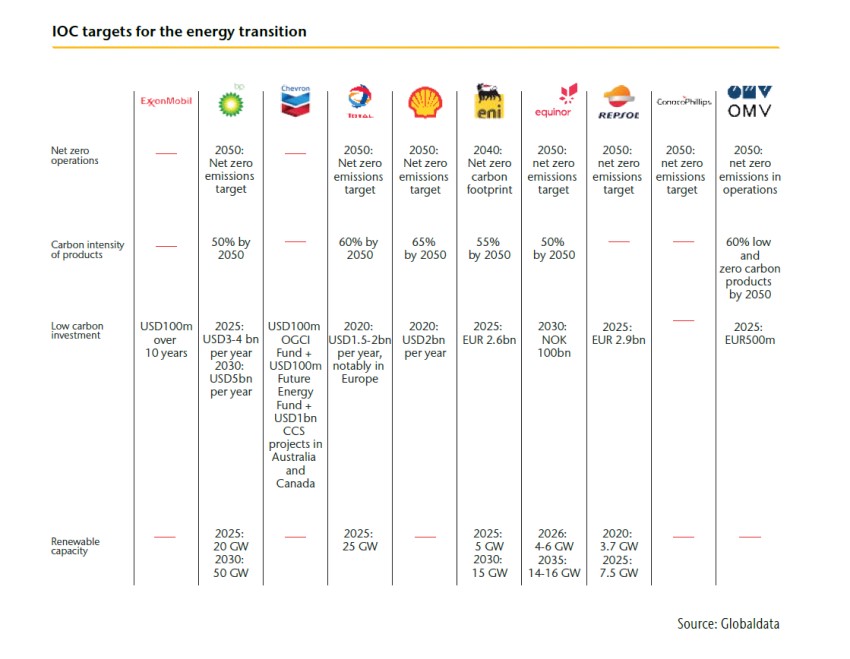M&A:
significant opportunities
Our Experts

Charlie Garrood
Head of EMEA Infrastructure M&A
EMEA
+44.207.086.1155

Charlie Pearson
Project Manager, UK M&A
UK
+44.207.086.1693

Alexandra Taylor
Executive Director UK M&A
UK
+44.207.086.4833
COVID-19, the low oil price environment and an
increasing focus on decarbonisation, are creating
unique challenges for energy. Many are turning to
M&A to add green assets, strengthen their balance
sheets and redeploy capital.
There is significant M&A activity in the energy sector and
it seems likely this trend will continue, as the sector faces a
number of headwinds that are concentrating minds when it
comes to strategic acquisitions and divestitures.
Low commodity prices, the impairment of assets and high
operational costs in areas such as upstream energy, are
encouraging firms to sell-off non-core assets and focus on
areas with higher returns. The pandemic has added further
impetus, as energy demand has fallen.
Conditions have created buoyant levels of M&A demand
and supply. On the demand-side, there is a wall of
capital raised by infrastructure, pension and sovereign
wealth funds that is looking for diversified and attractive
returns. Many are considering energy, even in the face
of divestment pressures that are looking to ‘green’ the
financial system. Stressed energy balance sheets in the face
of the low oil price environment and COVID-19 are helping
to drive up supply.
Energy is looking a particularly attractive prospect for
institutional investors due to the cost of capital differential
most financial firms enjoy. Acquirers are employing this
differential to pursue energy opportunities underpinned
by long-term contracts and strong counter-party credit.
Midstream acquisitions such as pipeline networks are
helping to pep-up and lock-in returns for the long-term;
while allowing energy firms to concentrate operationally
and financially on their core specialism/s.
“Firms need to
see M&A as an
opportunity to
strengthen their
balance sheet and
reposition for the
energy transition.”
These factors have been further
reinforced by moves to decarbonise.
In this area M&A activity forms the
twin arms of a pincer – with one arm
the divestment of carbon-intensive
segments of the portfolio and the other
the acquisition of – and investment
in – renewables. Where these are
acquisitions, they are less about pure
synergies and more about facilitating
a strategic change towards a lower
carbon footing.
The transition and a strategic driver
What is apparent is that there will be
significant M&A activity linked to the
energy transition. Firms need to see
M&A as an opportunity to strengthen
their balance sheet and reposition for
the energy transition. The likes of BP
and Shell are already pursuing such
opportunities as they evolve their
strategy.
When it comes to synergies with areas
such as power and renewables, firms
need to consider how these will create
value. Scale will inevitably be important,
but if you are simply buying scale,
without considering the underlying
capability needed in these combined
companies, acquisitions may prove
a challenge to integrate. M&A can
prove game-changing, but the more
successful transactions will be those that
marry external capability with that built
in-house.
This involves retooling staff and
refocusing efforts on areas of the
business that can support the energy
transition. BP, for example, have done
exactly that by developing in-house
renewables capabilities and then
acquiring Light Source, a developer
and operator of solar projects. This
has enabled BP - through its financial
and operational strength and access
to capital – to throw its weight behind
Light Source’s renewables ventures,
fast-tracking the deployment of solar
capabilities.
This strategic pivot to decarbonise
through the pursuit of energy-power
combinations, is also helping firms
to stave-off divestment pressure and
negative PR linked to more carbon
intensive operations. This is particularly
true for listed companies which face the
more acute pressure to transition and
champion their green credentials.
Increasing Synergies

“We anticipate a deepening of core trends,
with transactions linked to, and augmenting,
energy companies push to decarbonise.
Hydrogen appears particularly promising,
with advancements in technology and
storage opening up significant possibilities.”
5 Years
Much will depend on the recovery in the oil price. If we don’t see oil heading
north of USD 60 a barrel, we anticipate greater consolidation, particularly
among the smaller players, and the sale of non-core assets in places like
South America and Africa.
If we see an uptick to USD 70-100 a barrel, we will likely see consolidation
within the fracking sector, with distressed companies in the US and
elsewhere being acquired.
Firms looking to bridge into the green sector will also drive a significant level
of M&A, which will be a facilitator of a broader corporate strategy.
10 Years
We anticipate a deepening of core trends, with transactions linked to, and
augmenting, energy companies push to decarbonise. Hydrogen appears
particularly promising, with advancements in technology and storage openingup
significant possibilities. With obvious synergies with oil and gas storage and a
bridge to renewables, we anticipate interest among energy firms.
More broadly, energy M&A will continue to be linked to commodity pricing and
the long-term profitability of operations.
When it comes to trends in the wider M&A space, we anticipate the breadth of
involvement and the use of data and analytics to deliver far greater rigour and
granularity around transactions. Engagement will be not simply around the deal,
but will address underlying capabilities and liabilities, including issues such as
talent, cyber, intellectual property and supply chain.
Please click here to download the report.